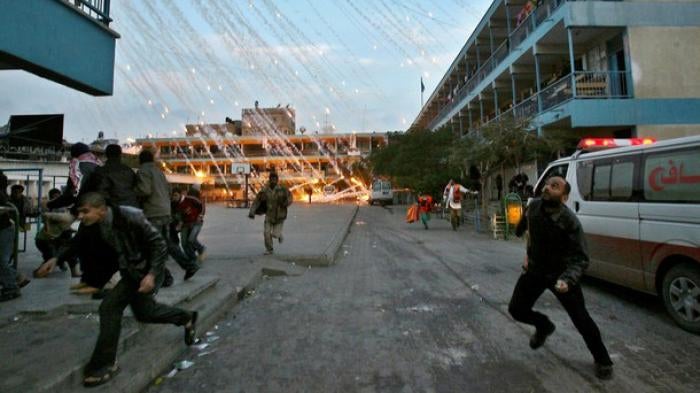Incendiary Weapons: Human Cost Demands Stronger Law
Read a text description of this video
Over the past decade, incendiary weapons including white phosphorous, have been used in numerous conflicts.
Bonnie Docherty, Arms Division, Human Rights Watch
The purpose of incendiary weapons is to set fire and burn people. While an existing treaty seeks to limit the human cost, it does not cover white phosphorus which gruesomely injured civilians in conflict zones such as Afghanistan and Gaza. It also has not stopped the use of other incendiary weapons in Syria and elsewhere.
This video contains violent and disturbing images. Viewer discretion advised.
At age 18, Muhammed Assi was severely burned by an incendiary weapon in 2013 and still lives with physical and psychological scars.
Muhammed Assi
At the time, words couldn’t describe my feelings. I saw fire completely surrounding me. And I started feeling burns on my body.
The following footage from 2013 documents events after an incendiary weapon landed on a playground in Urum al-Kubra, Syria.
Voice of teacher at Muhammed’s school
I’ve heard many of the students screaming. They were screaming everywhere. We were trying to find where the attack happened.
Dr. Saleyha Ahsan, Speaking in 2013
There is dozens of people that have just been rushed in, covered in burns and some white powder dust. Their clothes are hanging off them.
Muhammed Assi
The substance entered my respiratory system and my stomach, and it was very hard to breathe.
When we first got to the hospital, the doctors didn’t’ have a lot of experience dealing with this kind of substance. They started dousing us with water and with some serums. This was calming us at first, but then after less than a minute, my pain would multiply. We stayed just a few hours and they transferred us in ambulances.
Muhammed was taken to a hospital in Turkey where he stayed for three months.
Muhammed Assi
For six months after I finished treatment, I would dream or lay awake at night, reliving all of the events of that day, to the point where I sought treatment from a psychiatrist in France. The injuries to my body, the visible damage, it’s on about 85% of my body.
I’ll be walking on the street and someone will stop me and say, “Why do you look like that?”
The hard part is my little nephew is scared to come near me. My other nephew, who always used to hug me, is scared to play with me.
Voice of teacher at Muhammed’s school
It was really hard. For one year, it was like a nightmare every night. Lack of sleep and cannot be described in words. It hurts my brain every time I return to the story. It affected all of my life.
Bonnie Docherty, Arms Division, Human Rights Watch
It is time to strengthen the international law on incendiary weapons, and put an end to the immediate and lifelong suffering they cause.
Muhammed Assi
I really hope that these agreements signed by countries will actually protect civilians, protect human rights. Human beings have a right to live with dignity, to express their opinions to live with security.
(Geneva, November 9, 2020) – The horrific burns and life-long suffering caused by incendiary weapons demand that governments urgently revise existing treaty standards, Human Rights Watch and Harvard Law School’s International Human Rights Clinic said in a report jointly published today.
The 45-page report, “‘They Burn Through Everything’: The Human Cost of Incendiary Weapons and the Limits of International Law,” details the immediate injuries and lasting physical, psychological, and socioeconomic harm of incendiary weapons, including white phosphorus, used by parties to recent conflicts. Countries should revisit and strengthen the international treaty governing these weapons, which burn people and set civilian structures and property on fire, Human Rights Watch concluded.

